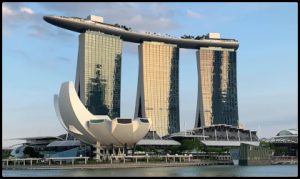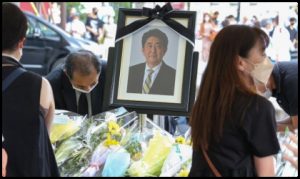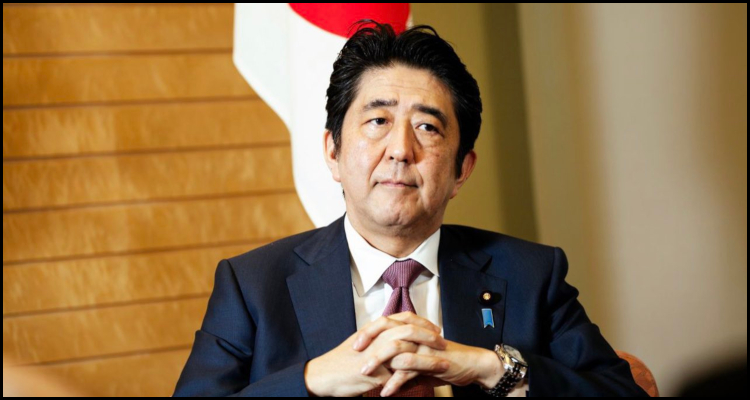Last week’s assassination of former Japanese Prime Minister Shinzo Abe (pictured) has reportedly been felt far and wide as the 67-year-old was one of the main protagonists in the effort to bring Las Vegas-style integrated casino resorts to the Asian nation.
According to a report from Inside Asian Gaming, 67-year-old Abe was killed on Friday afternoon in the Honshu city of Nara whilst campaigning for fellow Liberal Democratic Party member Kei Sato. The source detailed that the Tokyo-born leader was shot twice by an assassin using a homemade firearm and later pronounced dead at the nearby Nara Medical University Hospital.
Steady stewardship:
Abe was reportedly first elected to serve as the Prime Minister of Japan in September of 2006 but lasted only a year before being asked to stand aside in favor of the more popular Yasuo Fukuda. The Seikei University graduate purportedly started a second term as his country’s principal politician in December of 2012 and only left 2,822 days later due to poor health, which places him top among those that have occupied the island nation’s highest post.
Elite examples:
Inside Asian Gaming reported that the idea of bringing gambling-friendly integrated casino resorts to Japan first began in 2009 as a way of helping the country to attract more foreign tourists and improve its faltering economy. A special government committee purportedly started officially investigating the possibility some two years later using the newly-opened Marina Bay Sands and Resorts World Sentosa developments in Singapore as potential models.
Initial inspection:
When the Liberal Democratic Party regained control of Japan’s parliament in December of 2012, Abe was reportedly reappointed Prime Minister and travelled to see the three-tower Marina Bay Sands property for himself. The Yamaguchi representative later purportedly incorporated the legalization of integrated casino resorts into his ‘Japan is Back’ economic policy and declared that such facilities would ‘be key in Japan’s growth strategy’ by allowing the country to annually attract up to 20 million new foreign tourists.
Consistent campaigner:
Despite some initial protests, Abe reportedly began advocating for his administration’s Integrated Resort Promotion Act from December of 2016 so as to establish zones that would be permitted to host ‘integrated facilities bringing together tourism promotion and local activities.’ This piece of legislation moreover purportedly sought to break the country’s long-standing ban on casino gambling by acknowledging that such venues would need to be run by ‘private operators under appropriate supervision and control by the government.’
Rewarding realization:
To further realize his dream of bringing Las Vegas-style  developments to Japan and Abe reportedly created the Headquarters for Promoting Development of Specified Complex Tourist Facilities Areas from March of 2017. This was purportedly followed some 16 months later by the official ratification of his casino-enabling Integrated Resort Implementation Bill, which was to see the generation of gambling profits from the promotion of ‘long-stay tourism’ via the premiere of ‘internationally competitive and appealing features’ making use of ‘the local ingenuity and dynamism of the private sector.’
developments to Japan and Abe reportedly created the Headquarters for Promoting Development of Specified Complex Tourist Facilities Areas from March of 2017. This was purportedly followed some 16 months later by the official ratification of his casino-enabling Integrated Resort Implementation Bill, which was to see the generation of gambling profits from the promotion of ‘long-stay tourism’ via the premiere of ‘internationally competitive and appealing features’ making use of ‘the local ingenuity and dynamism of the private sector.’
Earned estate:
Although Abe left office in September of 2020, his Integrated Resort Implementation Bill reportedly went on to be fulfilled with the giant city of Osaka as well as the southern jurisdiction of Nagasaki Prefecture now waiting to hear if they are to be given permission to open the nation’s inaugural pair of integrated casino resorts. Although any final decisions are not expected before the autumn, Inside Asian Gaming declared that this entire campaign should be seen as ‘a standing monument to the work of Shinzo Abe’ and proof that ‘his legacy will live on’ despite the unfortunate fact that the leader ‘died without being able to see the fruits of his integrated resort vision.’


